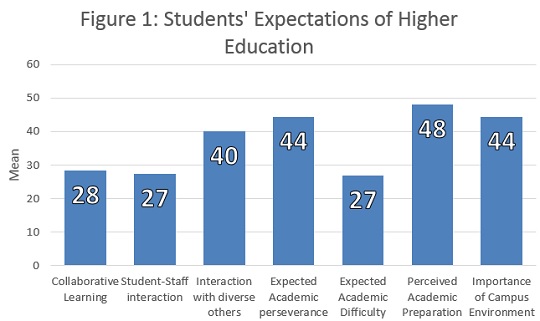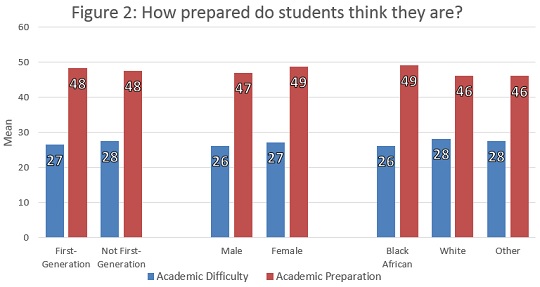What have we learnt
The comparison of the seven subscales in BUSSE shown in Figure 1 indicates students' beginning university’s expectations of higher education. Four subscales, Interaction with Diverse Others, Academic Perseverance, Academic Preparation, and Importance of Campus Environment had relatively high mean scores reported by the students. These show that first-time students expect to have interaction with people who hold different views from their own. They are also confident of persevering in their studies when things get tough and would like the campus environment to be supportive. First-year students also feel that they are relatively well prepared for academic work at university. Compared to this, they do not think academic work will be very difficult during their first year. Two other subscales first-year students reported low means on are Collaborative Learning and Student-Staff Interaction.

The preparation levels of students entering the higher-education system is raised as a cause for concern at all levels inside higher-education institutions and by many stakeholders outside higher education. Figure 2 provides important evidence to better understand and address these concerns. From this comparative analysis it is clear that there is a wide gap between how difficult students think university study is going to be and how well prepared students think they are. Figure 2 shows that first-generation, male and Black African students expect university to be less difficult than other groups. Black African students and female students also have the highest reported levels of preparation.
